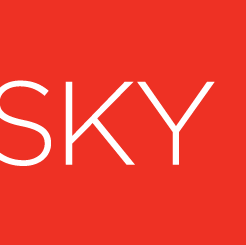An employee referral program is a recruitment strategy that turns your entire workforce into a vast network of recruiters. The structure of an employee referral program is highly variable. Some are very informal—a referral could simply be passing along a business card—while others can be complex programs complete with tiered rewards, analytics, applicant tracking systems, and more.
What are the benefits of employee referral programs?
There are numerous benefits to employee referral programs. Employee referral programs guarantee better retention. According to Straubel Foundation Executive Director Boryana Dineva, employee referral programs increase the longevity of both referrals and referrers. Employee referral programs also make the onboarding process a lot easier, since new hires necessarily already have previous relationships within the company. This is why employee referral programs are among the most cost-effective forms of recruitment strategy. With an employee referral program, you get to tap into a vast, pre-vetted pool of qualified applicants that includes many passive candidates, who are among your most desired candidates.With so many benefits and such a low-cost, it makes sense that these programs are highly popular. However, the fact that they can take many forms means that it can be tough to know how to build the perfect employee referral program for your needs.
How to create and implement an employee referral program.
What form your employee referral program takes will depend on your goal. Do you want to:
- Foster a more diverse work environment?
- Increase workplace efficiency?
- Identify and appeal to higher quality applicants?
- Increase morale?
- Reduce turnover?
Depending on how you set yours up, an employee referral program can cater to any or even all of these concerns. After determining what your company needs, the next step is to create a pipeline that makes sense for your business. Depending on the size of your workforce, this could be aggregating emails in an Excel spreadsheet or using tools such as LinkedIn Referrals. Oftentimes, onboarding your entire workforce onto your applicant tracking system (ATS) is overkill, but it is an option if you want a robust integration of your employee referral program into your hiring pipeline.
Since it’s an employee referral program, it’s essential to thoroughly train all your employees so that they feel confident using whatever system you decide to use. Training doesn’t just mean getting them comfortable with whatever technical tools you might be using. It means developing a shared understanding of what your company is looking for and how your employees are uniquely capable of contributing. An employee referral program effectively makes every single one of your employees an ambassador for your company. When communicating with potential candidates your employees should be able to guarantee some kind of next steps. Will the candidate receive an email? A phone call? Will they automatically be entered into the hiring pipeline or do they need to follow up with additional documents? The goal of your employee referral program is to get high-quality candidates, but the professionalism of your employees/recruiters will also impact your employer brand.
The overall success of your employee referral program will depend on keeping your employees constantly engaged. To keep recruiting effectively, they will need to know what positions are open. They should also be rewarded for their recruitment efforts, whether that be through a referral bonus, gift cards, potential for a promotion, or another form of recognition like a mention on the company website.
You should also keep your candidates engaged by answering questions promptly and being transparent about where they are in the hiring process. Since they have effectively been vouched for by current employees as being a potentially good fit, you should consider fast-tracking your referred candidates. That said, to avoid legal issues, make sure to use the same hiring criteria for ALL your potential candidates. The best way to determine the success of your employee referral program is through analytics. What you choose to track will be dependent on your company’s goals, but some data to consider could include:- Percentage of hires that are coming from referrals
- Response rate of referred candidates
- Workforce participation rate
- Quantity of passive job seekers recruited

